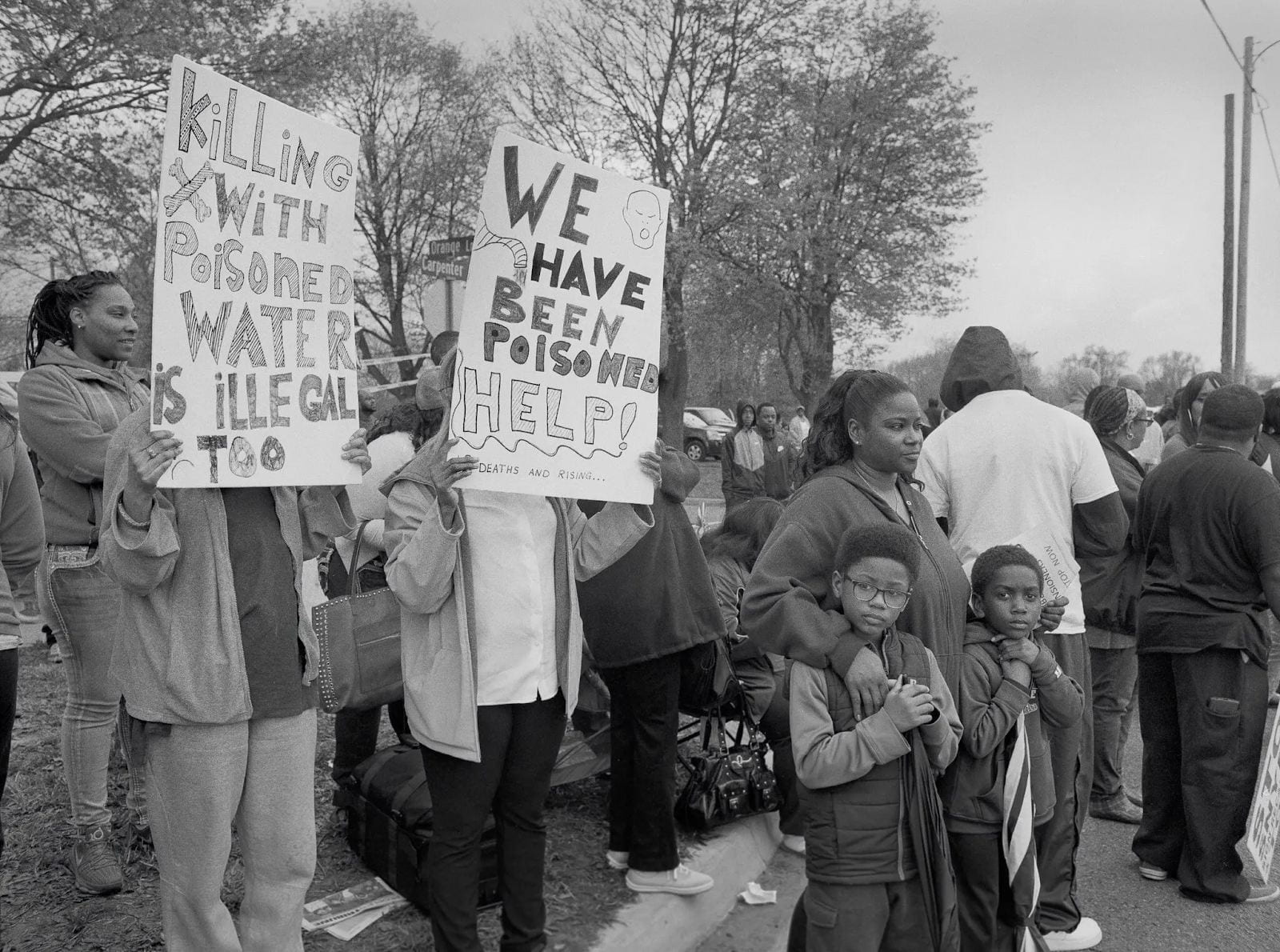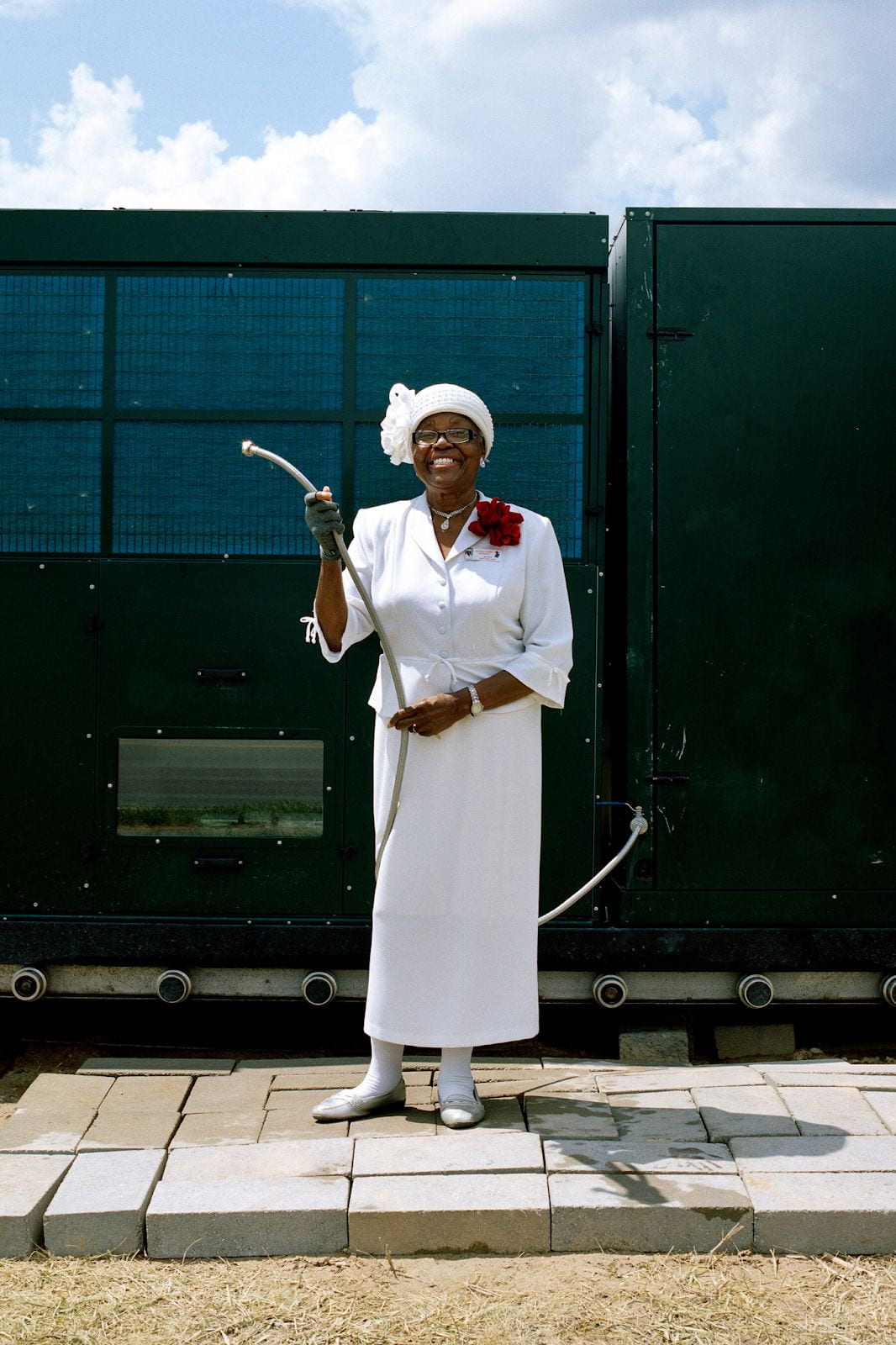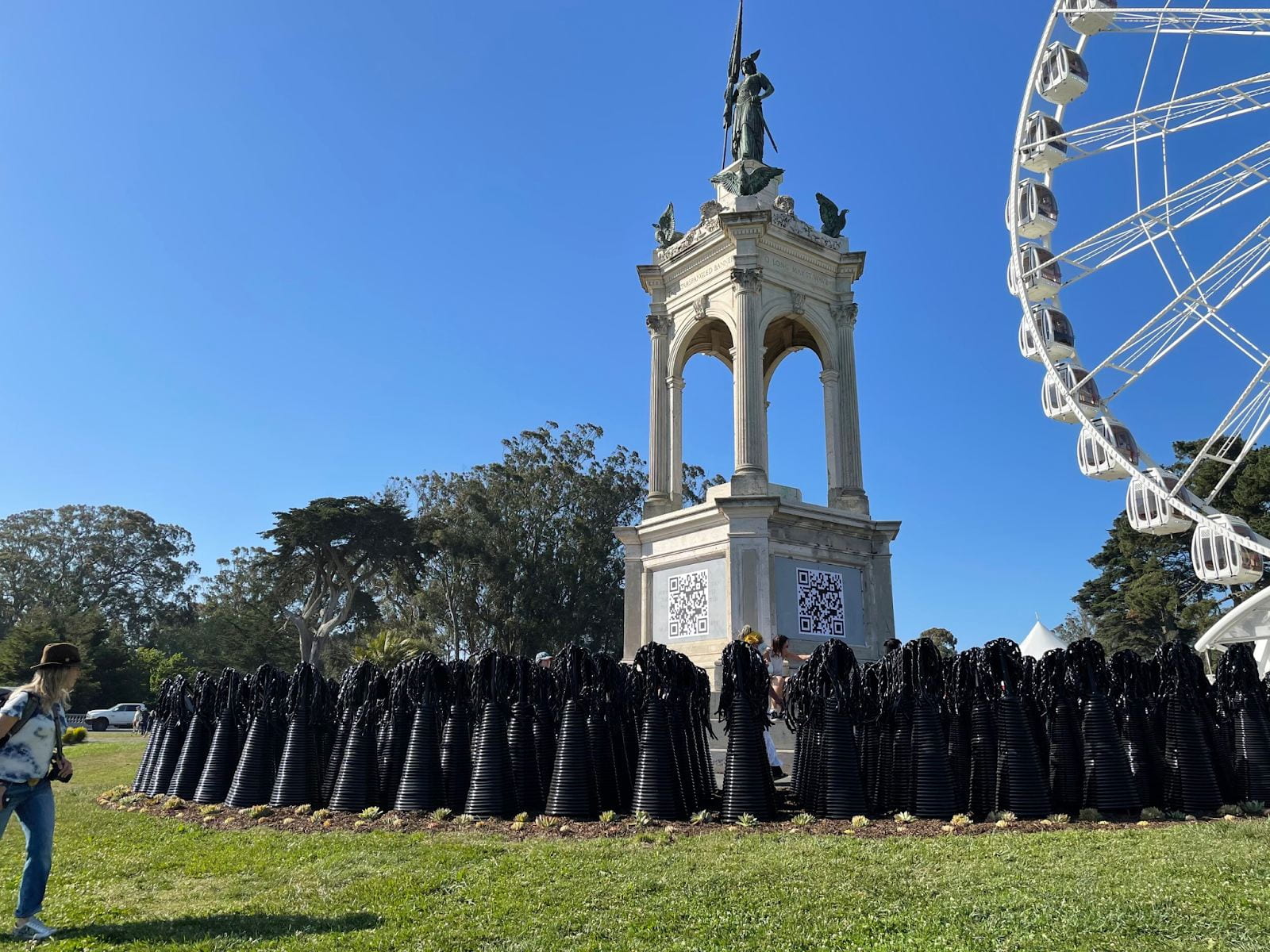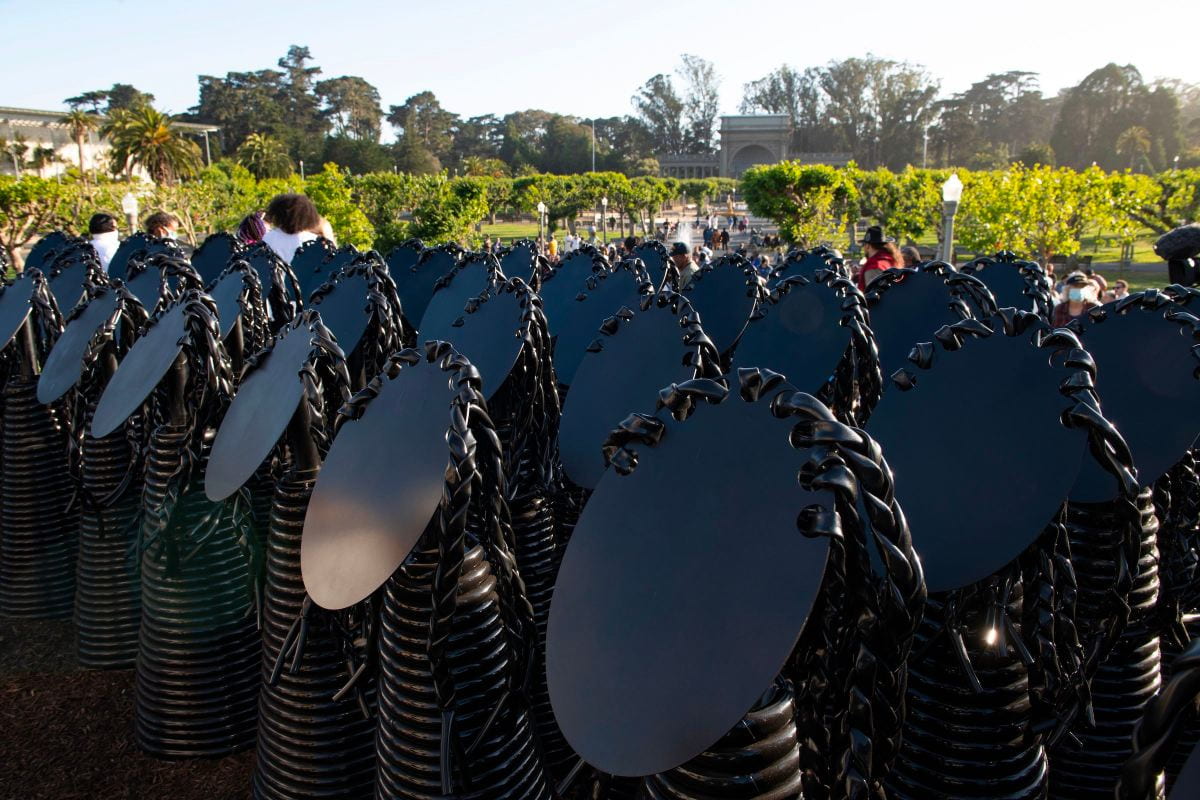Environmental Justice through Art
Though environmental activism and sustainability are becoming a bigger part of the global cultural consciousness, environmental justice is a less discussed, though extremely important, subsect of environmental activism. Environmental justice is defined by Robert Bullard, who is a celebrated Black environmentalist and is often credited as being the “father” of the environmental justice movement, as “the principle that all people and communities are entitled to equal protection of environmental and public health laws and regulations”.
Environmental justice often strives against environmental racism, which is defined by Dr Benjamin F Chavis Jr., civil rights leader, as “the intentional siting of polluting and waste facilities in communities primarily populated by African Americans, Latines, Indigenous People, Asian Americans and Pacific Islanders, migrant farmworkers, and low-income workers.” This kind of environmental injustice results in these communities being more heavily exposed to toxic fumes and metals, poor air quality, and other pollutants, which increase the occurrence of health problems like cancer and respiratory issues and lead to overall decrease in quality of life.
As is prevalent in many social justice movements, there are a lot of environmental justice activists who tell stories and express their feelings through art. Art has the emotional capacity to portray the realities of environmental injustice better than the news and is more accessible to everyday people than environmental data analysis. Art also has the capacity to offer new perspectives and even change narratives of landscapes. There are so many talented and driven environmental justice artists, though this post will highlight two stories of Black female artists who have contributed amazing work to the field.
LaToya Ruby Fraizer – Photographer and Activist
LaToya Ruby Frazier is an artist and environmental activist who is well known for her photo series “Flint as Family in Three Acts,” which documented the Flint, Michigan water crisis. Frazier’s work spans the mediums of photography, video, and performance, and carries common themes of social justice and the American experience, often using collaborative storytelling tactics in her work. Frazier’s work is featured in many national and international museums, and she has received multiple awards and fellowships.
The Flint water crisis is one of the most well known environmental justice issues in the United States and derived from when then-governor Rick Snyder decided to cut costs by switching the water supply in Flint, Michigan from Lake Huron to the Flint River. The Flint River is contaminated with fecal matter and other toxic waste, and this water source proceeded to sicken the predominantly Black city.
While Friazer was originally sent to Flint on assignment for a magazine photo essay, she soon made connections with the community and decided to expand her project. Frazier worked with local Flint poets and artists Amber Hasan and Shea Cobb to caption the photos and tell their stories.

Image Source: The New York Times/ LaToya Ruby Fraiser.
The photo above portrays Flint residents awaiting the arrival of President Barack Obama. Frazier writes that when Obama “took a sip of Flint water live on national television, Americans were deceived into thinking the water crisis was over.”

Image Source: The New York Times/ LaToya Ruby Fraiser.
The image above portrays Shea Cobb’s daughter Zion, who had no choice but to brush her teeth with bottled water every day. Cobb was born and raised in Flint and continued to live there with her daughter and mother until the water crisis hit. Soon Cobb was encouraged by her father to return to her ancestral home in Jackson, Mississippi. Cobb and her family eventually migrated to Mississippi and now drink clean water from a spring on a family property passed down through generations.
After spending so much time in Flint and getting to know its community, Frazier writes that she “could no longer idly stand by and wait for the government to do its job.” She started working with local mother, herbalist, and hip-hop artist Amber Hasan to procure an atmospheric water generator to help provide the people of Flint with clean water. She used grant money as well as her own to fund the project and personally brought the generator from a military base in Texas to the downtown neighborhood in Flint.

Photo Source: The New York Times/ LaToya Ruby Fraiser.
The image above is a resident of Flint, Michigan standing in front of the atmospheric water generator that Fraizer procured with the help of Flint native Amber Hasan.
Listen to LaToya Ruby Fraiser’s Ted Talk.
Purchase LaToya Ruby Fraiser’s photo series Flint as Family in Three Acts
Dana King – Sculptor
Environmental justice is not as concrete as increased pollution in racialized areas– another aspect of environmental justice is representation of different people in different landscapes, which can be examined through sculptures and monuments. There are many sculptures, even in our own Golden Gate Park, which memorialize and often glorify historical figures who perpetuated violence and racism throughout their life. One such example is a statue of Francis Scott Key, who was a slave owner and is most renowned for writing the lyrics to “The Star-Spangled Banner.” This sculpture was displayed in the Music Concourse of Golden Gate Park until it was toppled and partially destroyed by protesters on Junteenth of 2020.
In response to the destruction of the statue, the City of San Francisco hired artist Dana King to create an art installation to replace the statue. What she came up with was an installation of 350 “Ancestors,” Black bodies made from bronze, which surround the partially destructed plinth of Francis Scott Key. These Ancestors represent the first 350 Africans who were brought to the States through the slave trade, and the project is called Monumental Reckoning. The project was installed on June 18th, 2021 and remained in place for two years. King wrestled with this idea for a while, stating “I used to think that we should tear these monuments to white supremacy down […] but now I see how important it is that they stay up. My belief is that we need to tell the truth about American history. It’s a hard history, but we need to tell it in context.” King remarked that the statues represent how Key would not have achieved what he did without the help of Black Ancestors, but also that Black Americans would not be here if it were not for people like Key.

Source: Monumentalreckoning.org
For the two years that the installation was present, King and other San Francisco residents visited the Ancestors weekly to care for them and spend time with them. King stated, “we’re here every week to wash their faces and put flowers in their hair to remind them that they have always been loved, and that they have never been forgotten, and that we see them standing for justice, all these years later.” Additionally, the words “Lift Every Voice,” the first three words of the Black National Anthem, were installed above the stage of the Music Concourse, serving as opposition to the violent messaging of “The Star-Spangled Banner” and a reminder of how we should move forward.

Source: Monumentalreckoning.org
Sources:
https://www.nytimes.com/2022/06/24/books/review/flint-is-family-latoya-ruby-frazier.html
https://nmaahc.si.edu/explore/initiatives/black-history-month-2024
https://www.monumentalreckoning.org/


